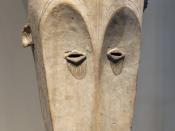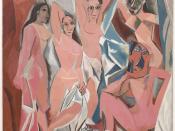'As audiences change, so too does the meaning of artists' works'
The process of interpretation and appreciation of art, over time, has become increasingly malleable amongst individuals, societies and the exaggerated "critics" (including almost anyone who has a pen and an established position.). This is particularly evident in the art of the 20th Century and its development, with artists such as Duchamp and Picasso leaving their marks in people's minds and mouths with bold images, concepts and statements that argued a case of its own, as the proceeding decades merged. With time also came societal changes, which allowed for development in opinion and expression amongst all social classes. No longer were the numbers of 'educated' onlookers limited. The emergence of broad-spectrum art history books and art as an international phenomenon meant that the artworks and the artists could analysed to a greater degree by a larger audience. It is this increasing interest and perspectives in the receptors to 20th century art that has changed the meanings of artworks from their creation to the present day.
"It's art, because I say it is..." - Marcel Duchamp.
Duchamp was an artist who seemingly enjoyed the creation and revelation of artworks as much as he enjoyed commenting on them afterwards. Artists with this manner in which they circuitously played with their audiences, encouraged the foundations of change. Duchamp pushed his audiences at the time to "think outside the visual" by confronting them with concepts and visual representations that were original and blunt in their affect. The mass effect of this was the result of movements merging and appropriating each other to evolve ideals, expectations and shatter the limits that were in place from past centuries of Western art culture.
"The creative act is not performed by the artist alone; the spectator brings the...


